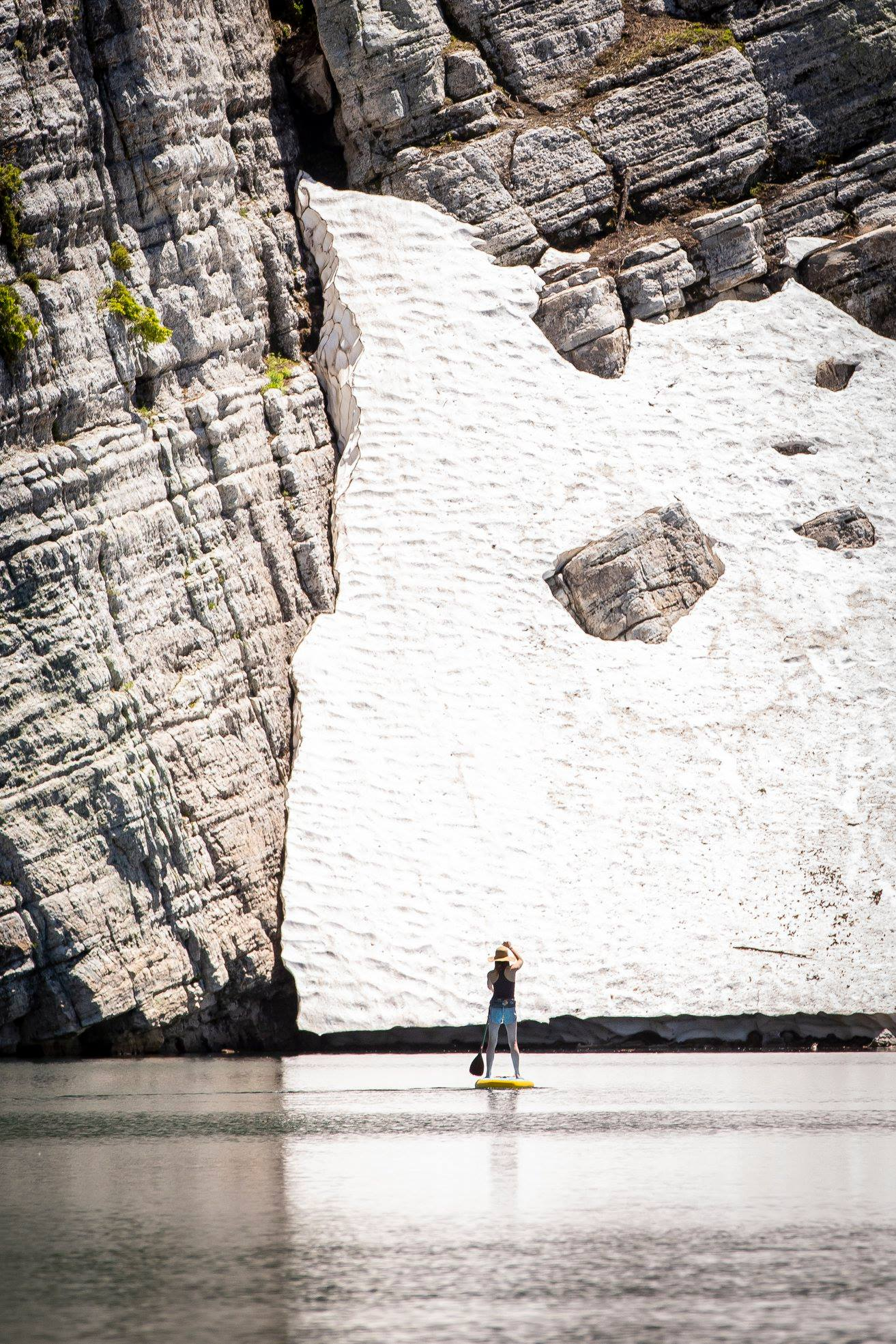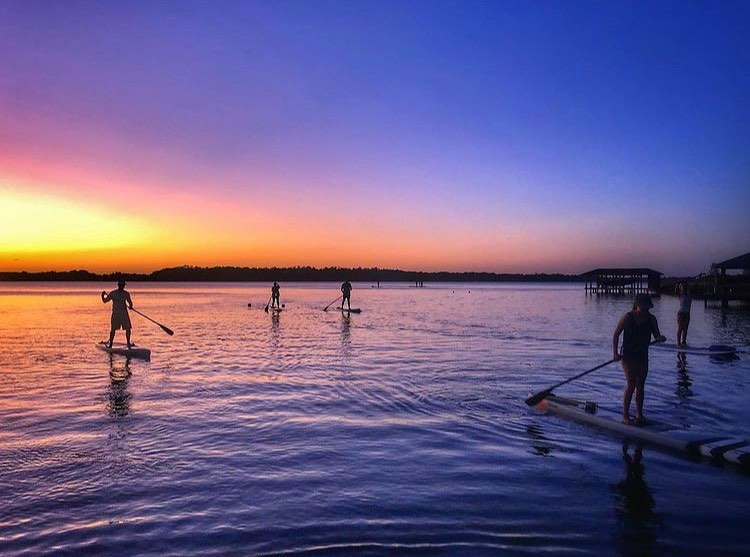
Things I Wish I Knew Before I Started Paddle Boarding
Paddle boarding is an amazing sport—but beginners often learn the hard way. From choosing the right board and paddle to mastering technique, balancing correctly, and understanding weather conditions, here are the things I wish I knew before I ever stepped onto a SUP. Use these tips to avoid common mistakes and enjoy your first paddle with confidence.
Starting paddle boarding is exciting, but there’s plenty beginners wish they’d known earlier.
The right board and paddle make a huge impact on stability and performance, while proper technique—especially stance, balance, and paddle stroke—can transform your experience.
Understanding weather and water conditions helps prevent frustration and danger, and knowing how to fall safely builds confidence.
SUP requires more core strength than expected, and even carrying the board correctly matters.
Finally, following basic SUP etiquette ensures safety and respect for others on the water.
With these insights, new paddlers can start their SUP journey with far more confidence and enjoyment.
Table of contents
Paddle boarding has a way of pulling you in fast—one moment you're admiring people gliding across the water, and the next you're buying your first board and learning (sometimes the hard way) how it all really works. Whether you're looking for fitness, fun, or a serene escape outdoors, SUP is one of the most rewarding water sports you can try.
But like most beginners, I made mistakes that could’ve been avoided with just a little guidance. Here are the biggest things I wish I knew before I started paddle boarding —and what will help you get started with confidence.

1. Choosing the Right Equipment Matters More Than You Think
Choosing the Right Paddle Board
I learned quickly that not all boards are created equal. My first mistake? Trying to paddle on a regular surfboard. It was unstable, slow, and downright frustrating.
A real stand up paddle board—whether inflatable or hard—offers:
-
Better stability
-
More glide
-
Proper volume for your weight
-
A deck pad designed for traction
Inflatable paddle boards (especially Glide’s) are incredibly durable, rigid, and portable, making them perfect for beginners.
Your Paddle Matters Too
Your paddle is your engine. The wrong paddle turns SUP into unnecessary work.
Things I wish I knew:
-
Your paddle should be 6–8 inches taller than you.
-
The blade faces forward, not backward.
-
Carbon fiber paddles beat aluminum every time—they're lighter, stiffer, and far more efficient.
2. Proper Technique Makes a Huge Difference
Basic Paddle Strokes
Knowing the forward stroke, sweep stroke, and reverse stroke would have saved me hours of frustration. Once I learned to:
-
Keep my arms straighter
-
Engage my core
-
Pull myself toward the paddle
—everything clicked.
Balance and Body Position
I started with a “surf stance” (one foot ahead of the other). Big mistake.
For stability:
-
Feet parallel, hip-width apart
-
Knees slightly bent
-
Body facing forward
-
Core lightly engaged
Learning How to Fall
Yes, you will fall. It’s part of the sport.
Pro tip: Fall away from your board, not onto it.
And practice climbing back on ahead of time—don’t wait until you fall in deep water.

3. Environmental Awareness Is a Game Changer
Weather & Water Conditions
Wind can turn a pleasant paddle into a nightmare. Waves can overwhelm beginners. And tides? They matter—big time.
Here’s what I wish I’d done from day one:
-
Start on calm, flat water
-
Check wind speed (less than 7 mph is ideal)
-
Avoid offshore winds
-
Watch for storms or shifting weather
Your experience depends 100% on choosing the right water conditions.
4. SUP Requires More Fitness Than I Expected
SUP is sneaky. It looks easy but challenges your core, legs, back, and shoulders. A little pre-training goes a long way:
-
Balance exercises
-
Light strength training
-
Core conditioning
Once I strengthened my core, everything—from paddling power to stability—became easier.
5. Even Carrying the Board Has a Learning Curve
Boards look light… until the wind hits. Learning proper carry techniques matters, especially with hard boards.
Two easy methods:
-
Use the center carry handle
-
Lift the board onto your head for balanced weight distribution
Inflatables are easier, but still require smart handling when inflated.
6. SUP Etiquette Exists—And It Matters
Before I started, I didn’t realize SUP had an etiquette code.
Now? I wish I’d followed it from the start.
Essential rules:
-
Keep distance from other paddlers
-
Don’t block boat lanes
-
Stay out of swim zones
-
Yield waves to surfers in SUP-surf zones
-
Offer help if someone needs it
Good etiquette keeps everyone safer and happier.

Final Thoughts on Things I Wish I Knew Before I Started Paddle Boarding
If you're new to paddle boarding, you’re in for an incredible adventure—but knowing these things ahead of time can help you avoid frustration, stay safer, and enjoy the sport so much more.
So grab your board, lather on some sunscreen, choose the right conditions, and get ready to fall in love with SUP. You’ll be gliding confidently in no time.
FAQs: Things Beginners Wish They Knew Before Paddle Boarding
What type of paddle board is best for beginners?
Most beginners do best on a wide, stable all-around SUP (31–34 inches wide). Inflatable paddle boards are also excellent for new paddlers because they’re stable, durable, and easy to transport.
How hard is paddle boarding to learn?
SUP is one of the easiest water sports to learn. Most beginners can stand and paddle within 10–30 minutes—especially on calm, flat water with a stable board.
Why does paddle orientation matter so much?
The paddle blade should angle forward (away from you). This makes each stroke more efficient, reduces arm fatigue, and improves glide. Many beginners unknowingly paddle with the blade backward.
What is the most common mistake new paddlers make?
Standing in a staggered “surf stance.” This reduces balance. Instead, keep your feet parallel and shoulder-width apart, with knees slightly bent.
How do I avoid falling off my paddle board?
You can’t avoid every fall—but you can avoid injury by falling away from the board. Try to land in the water, not on the deck or fins.
What should beginners know about wind and weather?
Wind is the biggest beginner hazard. Anything above 7–10 mph can make paddling difficult and unsafe. Always check wind speed, tides, and storms before heading out.
Do I need to be in great shape to paddle board?
Not at all. SUP is low-impact and beginner-friendly. But improving core strength and balance will dramatically speed up your progression and reduce fatigue.
Should I take a lesson before paddle boarding?
It’s not required, but one good lesson can save you hours (or days) of struggling with balance, paddle angle, and foot placement.





